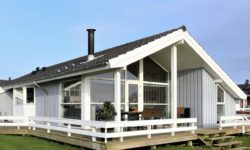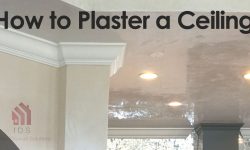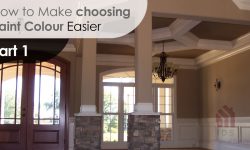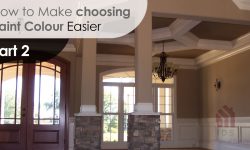When visible seams develop on drywall the drywall finishers fix them by using an effective technique known as skim coating. This is the best technique to conceal visible drywall seams and levelling the unwanted texture or an uneven surface. This technique is not complicated, but still takes a considerable amount of practice to achieve the correct and smoothest finish.
Skim coating can be used on any newly installed drywall or on an already painted drywall. You can also achieve a level 5 drywall finish by using this technique. For this reason, this method of levelling drywall is recommended by the National Gypsum Co. for the places where there is stern lighting and also as a substrate for a gloss or semi-gloss paint.
- If the wall or ceiling that you want to paint is already painted, use a solution of trisodium phosphate (1/2 cup) or an equal amount of detergent with 2-gallons of warm water to clean it.
- Use pre-mixed all purpose joint compound to patch cracks and cover them with drywall tape to avoid so that they don’t occur again when you have fully skim coated the wall. After this, apply the compound on the cracks by using a wide blade of 4-inch, cover it with the tape and then use a blade to scrape it flat. Before you proceed further, let the repairs dry.
- Use a drywall primer to prime the wall. It will help you with adhesion of the joint compound.
- To skim coat a wall that is unpainted use a topping compound or a mixture of pre-mixed all-purpose joint compound and lightly thinned with water. If you want to level out a surface that have been painted and textured already, you can directly use pre-mixed all-purpose joint compound over it.
- When applying the compound start from one corner of the surface and use a wider or 8-inch blade to apply a thin coat of joint compound. Make sure to work across the surface to the other corner. While doing so, scrape off the excess compound with the blade, then apply the second coat next to the first one and scrape it. Follow this process until the entire surface is completely covered.
- When the first coat dry, repeat the process again. Usually, two coats are adequate to skim coat an unpainted drywall, but if you want to level out a painted wall or texture, you can use 3 to 4 coats. Before applying a next coat, let every coat dry properly.
- Use a 120-grit sandpaper to sand the last final coat. An effective way is to use a work light and shine it at an oblique angle to the surface when you are sanding the surface. This is to make sure that all the surfaces are levelled smoothly. Don’t forget to wear dust mask to protect your respiratory system and lungs and respiratory while sanding the surface.
- Use a drywall primer to prime the wall.
Important things you will require:
- Warm water;
- Drywall tape;
- Trisodium phosphate;
- Topping compound;
- Pre-mixed all-purpose joint compound;
- Drywall blade (4-inch);
- Drywall blade (8-inch);
- Dust mask;
- Drywall primer;
- Sandpaper (120-grit);
- Work light.
Handy Tip:
Make sure to keep the joint compound cleaner. If dust, bits of paper or dried joint compound gets accumulated it will create obstructions with the adhesion and create lines in the wall.
Warning:
Make sure to prevent spreading the thick layers of joint compound. It may develop cracks and will take a long time to set properly.
Get a help from an Interior drywall solutions team for more information.




